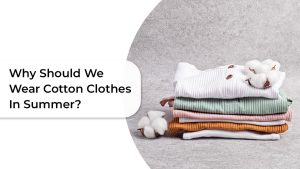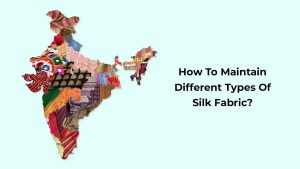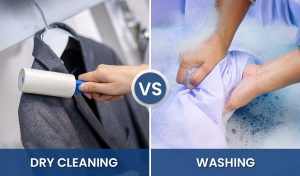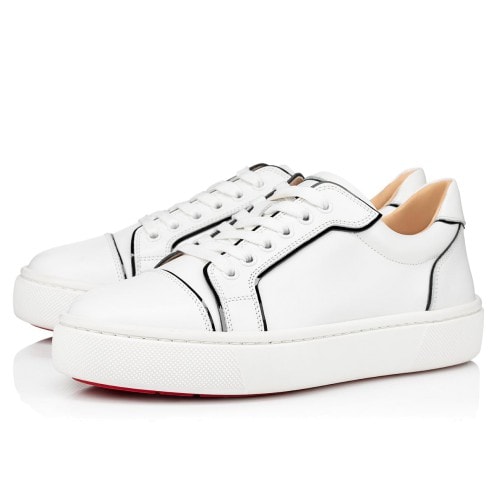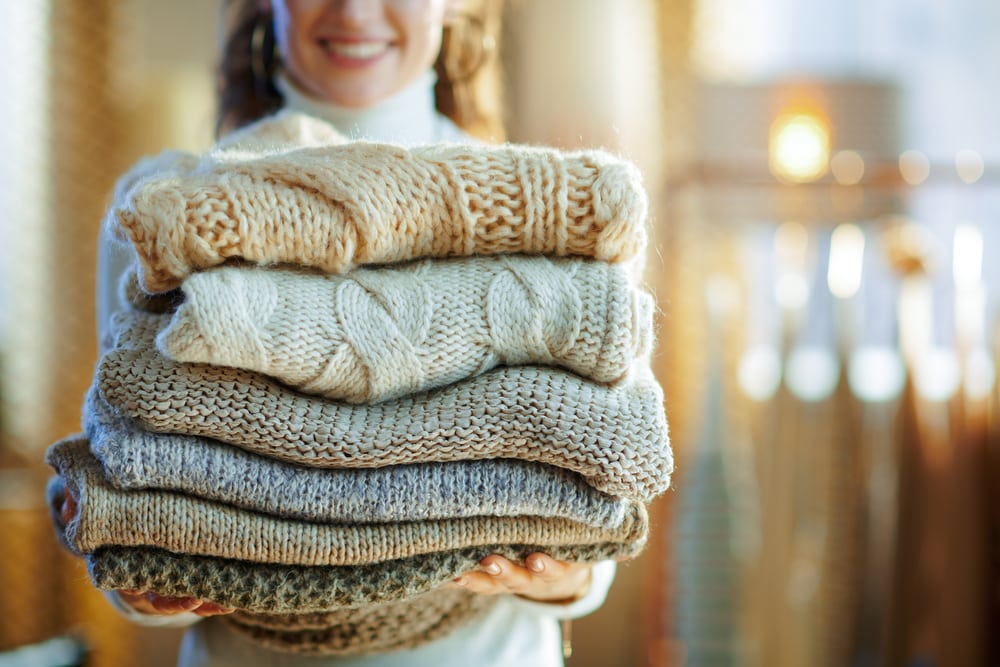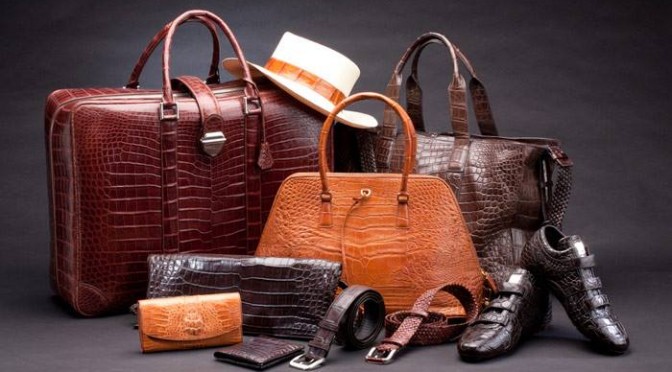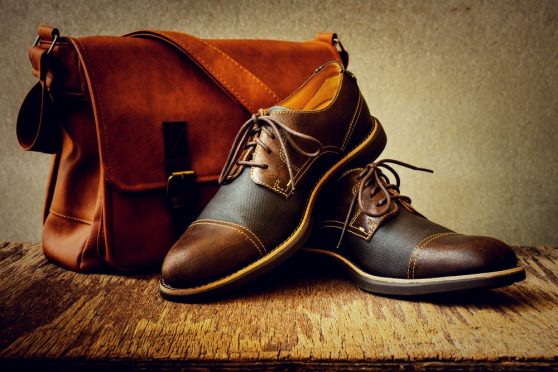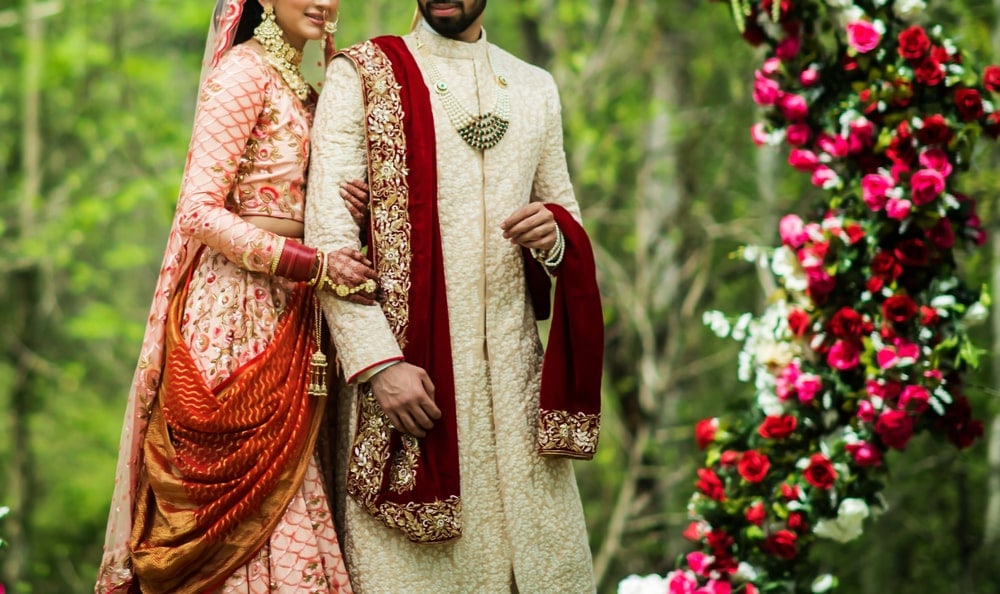Whether you're a casual sipper or a coffee...
Read More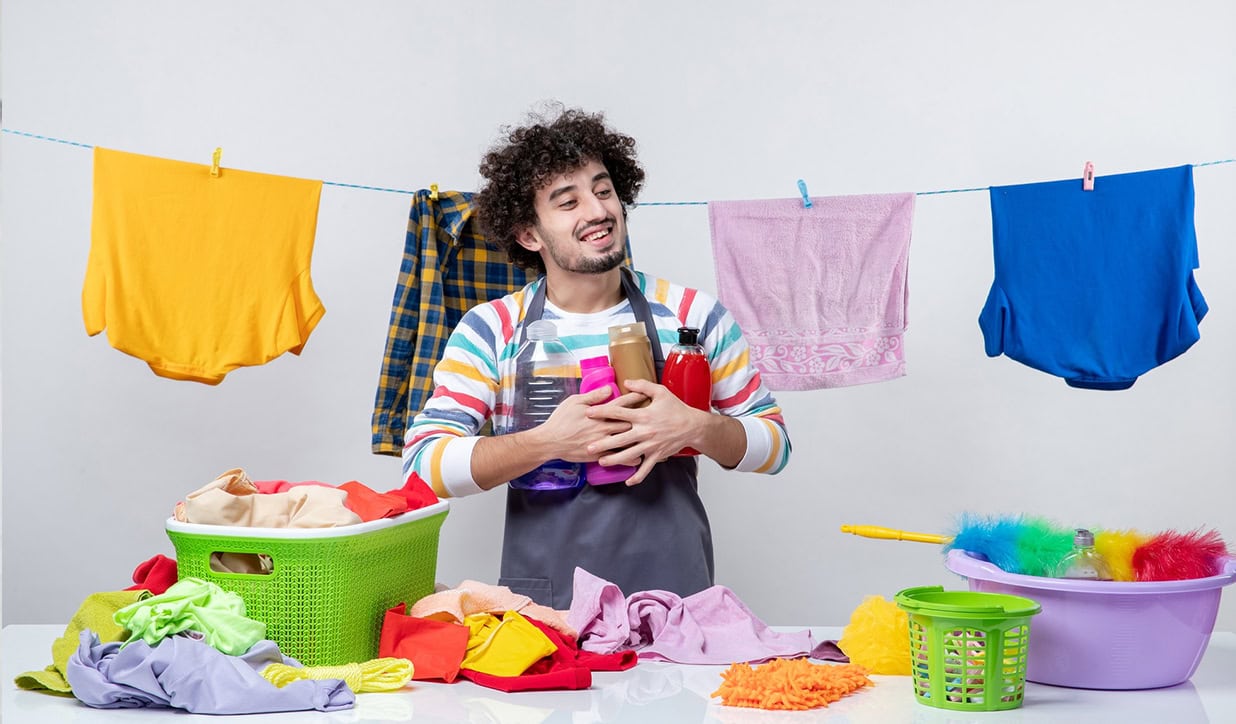
Table of Contents
Coloured clothes often get fade, sometimes they bleed colour as well. Most of the times these things happen because – people don’t know how to wash coloured clothes.
That’s why, we have prepared this simple guide on washing coloured clothes. By reading this, you can save them from fading, bleeding colours, shrinkage and other common laundry issues.
We will start from sharing some common laundry issues related to coloured clothes and their reasons. This will give you a better understand of what not to do while washing coloured clothes.
Why Does Coloured Clothes Fade?
Jeans generally have a thick fabric and they are not supposed to be washed as frequently as light-weighted clothing like cotton shirts, kurtas, etc. If you don’t live in an extremely hot and humid climate or you don’t sweat heavily, you don’t have to wash jeans after wearing them once. Washing them too often can fade the colour of your jeans.
Here’s what you should consider washing jeans:
- Colour Bleeding
Some dyes are prone to bleeding, when garments carrying such dyes get wet, the dye comes out of the fibres and gets spread into water. This dye can further get on some other colours.
- Bleach or Sunlight
Even though it has multiple benefits to air-dry clothes under sunlight, but sunlight can strip colours from your clothes. Yes, the UV rays can do that. Other than this, chlorine bleach can fade your coloured clothes. Hence, it is not suggeted to dry coloured clothes under harsh sunrays for a long time. Also, chlorine bleach should not be used on coloured clothes.
Things To Do Before Washing Coloured Clothes
Read the garment care label
The manufacturers usually put clear wash and care instructions on the garment care label. And, you should follow them. Check whether the clothes are washable or not. If the label says “dry clean only” or “dry clean” then we don’t suggest washing them at home.
However, you can still clean some “dry clean” labelled clothes at home, by using a home dry-cleaning kit.
The label may also carry the ideal temperature and wash settings as per the fabric.
In case, its tough to undestand the signs on garment care label, you can click here and understand the laundry symbols.
Sort the dirty load
Half of laundry mistakes happen because people don’t sort clothes properly before washing them. Hence, always sort the heap of dirty clothes on the basis of:
- Colour: Separate the white and pastel or light-coloured clothes from the dark-coloured clothes. Here is how you can get more specific while sorting on the basis of colour:
- Red and pinks
- Bright blues and greens
- Bright purples, oranges, and yellows
- Dark colours like black, dark blues, dark grays
- Denims (they tend to bleed heavily, when they are new)
Once you have sorted clothes in this manner, even if a garment will bleed colour, they are less likely to ruin the other clothes that are being washed along.
But, you should be extra cautious and separate colour bleeding garments as well.
- Weight: It is not suggested to wash heavy clothes (jeans, sarees, trousers, etc) with light-weighted clothes (tee-shirts, blouses, tops, etc.) in the machine. Because, the light-weighted ones may not get cleaned properly.
- Stain: Imagine washing a tee-shirt has muddy stains and you wash it along with a dirty shirt with no stais. The mud from the T-shirt will get transferred to the comparatively cleaner shirt as well. And, that’s why you should never wash such clothes together. Separate the clothes that have stains from the ones that don’t.
Get rid of the toughest stains from clothes instantly?
Pre-treat the stains

Don’t wash the garment without removing the stains. Here’s why:
Detergent can remove some light stains, but it is not an effective stain remover. So, you will have to use commerical stain removers or products like vinegar, bleach, baking soda, etc.
When you pre-treat stains, you get two benefits:
- The residue of stain remover product gets removed completely from the product during wash.
- If the stain has lightened but not gone completely, then detergent can further lighten it and remove the stain.
How To Remove Stains From Coloured Clothes
If the stain is still fresh or the stain-causing element (food, paint, makeup, etc.) is still on the garment. Scrape away the excess material from the garment, here’s what you can do:
- Scrape away the excess material using any blunt object like a butter knife or credit card.
If the stain has occurred from a liquid such as wine, juice, ink etc. Here’s what you should do:
- Blot the excess liquid using a clean, white microfiber cloth.
Pro-tip: Treat the stain ASAP if you can. Otherwise it gets settled deeper in the fabric, and it gets tough to remove.
Now, you should choose the right stain remover depending on the:
- Type of fabric
- Type of stain
We have already prepared separate stain removal guides for a lot of common stains, you can check them out:
In case, you have a different stain to deal with, you can check out our detailed guide to stain removers.
Can’t get wrinkles out of your jeans easily?
We can do it for you.
How To Wash Coloured Clothes

Step 1: Load the washer
Even though it sounds a very straightforward to load the washer, you actually need to be cautious
Here’s what you need to take care of:
- Close all the zippers, VELCRO and buttons of all the garments to prevent tangling, wear and tear.
- Turn the garments inside-out to prevent wear and tear.
- If any garments has lace or embellishments, place them in a mesh laundry bag.
- If the garments are too delicate or heavily used, then also you should keep it in a mesh laundry bag.
- Put all small clothes like socks, gloves, babywear, etc. in mesh laundry bags.
Then choose the right load size: “Load size” is basically the number of clothes you are going to wash at once. Generally, machines have small, medium and large settings for this purpose. Here’s what you can choose:
- Small setting: If your laundry load fills one-third of the machines’ washer.
- Medium setting: If the laundry load filles two-third of the machine.
- Large setting: If the size of laundry load is byeond two-third of your washer.
Click here to know more about: Washing machine capacity and load size.
Important!
Don’t overload the washer.
There should be some empty space inside the washer. Otherwise, the clothes will not spin properly and the dirt will get re-settled in other garments. Basically, your clothes will not be perfectly clean. In fact, they can start looking faded or washed out.
How to check whether washer is overloaded or not?
Once you load the washer, put your hand inside and swish through the water and garments. If you are able to move it freely, then your washer is not overloaded.
Step 2: Put detergent in the dispenser
Add 1 tablespoon of liquid or powder detergent in the dispenser. You can also add it directly to the water in the washer and stir it using your hands until it dissolves.
- You should always prefer a mild, non-toxic detergent to keep your clothes in a good condition even multiple wash cycles.
- You should also know that detergent comes in various forms: Power, Liquid, Pods.
You can understand the Pros and Cons of all the forms of detergent and then choose one.
How much detergent should be used:
1 tablespoon of liquid or powder detergent is enough to clean 1 kg of laundry load. You can increase the amount of detergent according to the weight of load.
People often have an urge to add extra detergent. Some of them a have a thought running back in mind that says “more detergent will clean clothes better.” However, that’s not true.” Extra detergent will not make your clothes “cleaner”. Too much detergent gets tough to remove even after 2-3 rinse cycle. When detergent residue stays in the garment, it feels rough, sticky and itchy.
In case you are washing woollen clothes, use wool-safe detergents like Ezee.
You can also check out our guide – how to wash woollen clothes.
If you want you can use some laundry additives like baking soda, vinegar, bleach, etc.
Click on the links below to know when and how they can be used:
Step 3: Set the right water temperature
How to wash coloured clothes – with hot water or cold water?
If you are unsure, use cold water.
Specifically bright and bold (dark) colours should be washed on a cold water setting. This helps in preventing colour bleeding and fading of clothes.
There is a common notion that hot water helps in cleaning the clothes better, however, this is more or less a myth.
Apart from colour, the water temperature should be decided on the basis of the fabric of the garment. You can check your garment care label for this. However, we always recommend cold water for coloured clothes.
Step 4: Set the suitable cycle
The colour of the garment has nothing to do with the cycle. But still, a gentle cycle is always the best one. The time of agitation in water is lesser which eventually does not harm the fibres of any fabric. And, that’s how your garments stay in a good condition for a longer period. Clothes don’t fade, piling doesn’t occur. In all, your clothes stay safe.
In case your clothes are extremely dirty, you can switch to “normal” wash cycle.
Run the machine and let your clothes getting washed.
That being said, you should try to understand how washing machine cycles actually work.
Caution: Don’t use chlroine bleach
Chlorine bleach is not a colour-safe bleach. It can fade away the colours completely. You can use oxygen bleach or hydrogen peroxide-based bleach instead.
Step 5: Dry coloured clothes after wash

We suggest you to prefer air-drying over using a clothes dryer machine. Because, high heat from the dryer can fade out the colours slightly. But, if you still want to use a dryer, set it on the “lowest” heat setting, use “gentle”, or any delicate cycle to reduce chances of wear and tear.
Here’s how you can air-dry coloured clothes.
- Squeeze extra water from the garment.
- Then hang it on a clothesline or a clothes-drying rack.
- Leave it there for 5-6 hours or until it dries. (The duration depends on the weather conditions, thickness of fabric, and several other elements).
As we already mentioned, UV rays from sunlight can fade away the colours, hence, don’t leave them under direct sunlight for long hours. It is better to hang them in a shady space. If you still want to air-dry them under sun, do it only for 20-30 minutes.
If your light-coloured clothes have got colour bleeding stains, you can read how to remove colour bleeding stains.
How To Reduce Colour Bleeding From Clothes
Many garments will stop bleeding dye after a few washes. Others will bleed every time. Here’s what to do to help prevent it:
Generally, clothes don’t bleed dye after they are washed 3-4 times. However, there are exceptions and some poorly dyed ones keep bleeding colour always. Here’s how you can deal with them:
- Wash them separately: Always wash such garments separately. You may need to hand wash them every time because washing a single garment in machine is not a good idea.
- Use distilled white vinegar: In some cases vinegar can bind the dyes to some extent. Hence, add half a cup (approximately 50 ml) of vinegar to the rinse cycle (machine wash)/ rinsing water (hand wash). This may not work always, but you can still do it as white distilled vinegar does not harm clothes.
Thinking how to figure out whether a garment will bleed colour?
That’s simple!
Whenever you buy a new coloured garment. Put it in a bucket full of water and let it soak in overnight or at least for 5-6 hours. If it will have loose dyes, it will bleed in the water. (Applicable on washable clothes)
If you want more information on washing clothes, stain removal, dry cleaning, etc. then keep visiting Tumbledry, we post a lot on these topics.
Disclaimer: The opinions expressed in this article are those of the author. They do not necessarily purport to reflect the values or views of Tumbledry.
Different Types of Silk Fabric: Complete Care Guide
Let’s explore the richness and diversity of types...
Read MoreHow to Remove Ink Stains From Clothes
Removing an ink stain is not only possible...
Read MoreWhat Is Faux Leather: Tips to Maintain Your Bag
In this blog, you will get to know,...
Read MoreTumbledry or Line Dry – Which is the
Tumbledry or Line Dry? If you can't figure...
Read MoreEverything You Need To Know About Home Dry
Are you hearing a lot about Home Dry...
Read MoreHow to Do Carpet Cleaning for Commercial Buildings
Carpets in every commercial space, such as offices,...
Read MoreDifference Between Dry Cleaning And Washing At Home
Did you ever confuse dry cleaning or washing?...
Read MoreHow To Do Dry Cleaning At Home?
Discover the convenience of dry cleaning at home!...
Read MoreHow to Remove Shoe Odor? Freshen Up Your
If your shoes smell bad, it means that...
Read More
